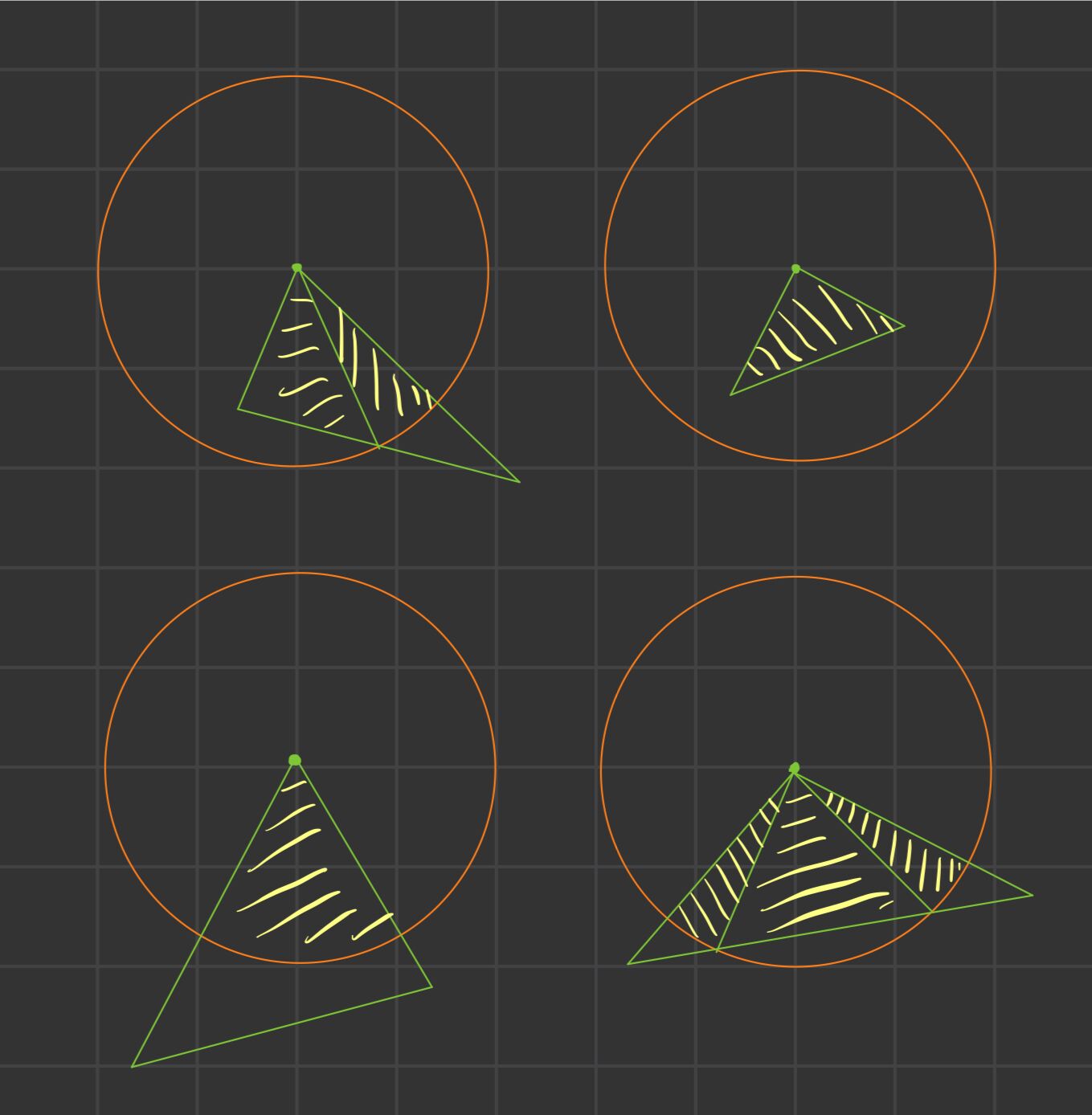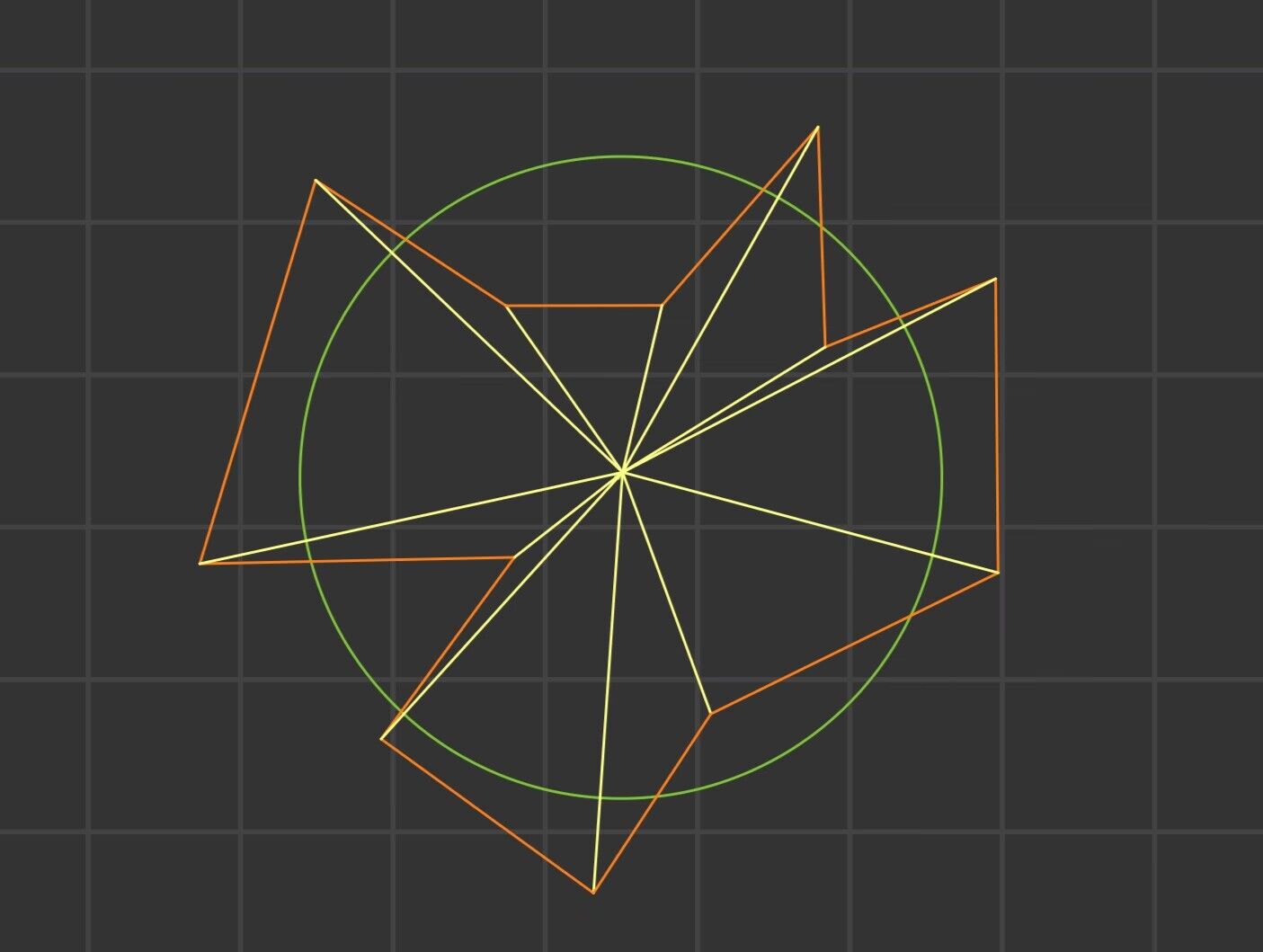1
2
3
4
5
6
7
8
9
10
11
12
13
14
15
16
17
18
19
20
21
22
23
24
25
26
27
28
29
30
31
32
33
34
35
36
37
38
39
40
41
42
43
44
45
46
47
48
49
50
51
52
53
54
55
56
57
58
59
60
61
62
63
64
65
66
67
68
69
70
71
72
73
74
75
76
77
78
79
80
81
82
83
84
85
86
87
88
89
90
91
92
93
94
95
96
97
98
99
100
101
102
103
104
105
106
107
108
109
110
111
112
113
114
115
116
117
118
119
120
121
122
123
124
125
126
127
128
129
130
131
132
133
134
135
136
137
138
139
140
141
142
143
144
145
146
147
148
149
150
151
152
153
154
155
156
157
158
159
160
161
162
163
164
165
166
167
168
169
170
171
172
173
174
175
176
177
178
179
180
181
182
183
184
185
186
187
188
189
190
191
192
193
194
195
196
197
198
199
200
201
202
203
204
205
206
207
208
209
210
211
212
213
214
215
216
217
218
219
220
221
222
223
224
225
226
227
228
229
230
231
232
233
234
235
236
237
238
239
240
241
242
243
244
245
246
|
#include<bits/stdc++.h>
#include<iostream>
using namespace std;
typedef double db;
constexpr double eps=1e-5;
const double pi=acos(-1);
int sign(double k){
if (k>eps) return 1;
else if (k<-eps) return -1;
return 0;
}
int dbcmp(double x,double y){
if(y-x>eps) return 1;
else if(y-x<-eps) return -1;
return 0;
}
template<typename T>struct point {
T x, y;
bool operator == (const point &a) const {
return (abs(x - a.x) <= eps && abs(y - a.y) <= eps);
}
bool operator < (const point &a) const {
if (abs(x - a.x) <= eps) return y < a.y;
return x < a.x;
}
T length2() const {
return (*this) * (*this);
}
T length() const {
return sqrt(length2());
}
point unit() {
double len = length();
return {x / len, y / len};
}
point operator -() const {
return { -x, -y};
}
point operator + (const point &a) const {
return {x + a.x, y + a.y};
}
point operator - (const point &a) const {
return {x - a.x, y - a.y};
}
point operator * (const T k) const {
return {k * x, k * y};
}
point operator / (const T k) const {
return {x / k, y / k};
}
T operator * (const point &a) const {
return x * a.x + y * a.y;
}
T operator ^ (const point &a) const {
return x * a.y - y * a.x;
}
point rotate(const double rad) const {
double c = cos(rad), s = sin(rad);
return {x*c - y * s, x*s + y * c};
}
point rotate90() const {
return { -y, x};
}
double get_angle (const point &a) const {
return atan2(y, x);
}
friend istream & operator >> (istream&, point &a) {
scanf("%lf %lf", &a.x, &a.y);
return cin;
}
friend ostream & operator << (ostream&, point &a) {
printf(" ( %.6lf , %.6lf ) ", a.x, a.y);
return cout;
}
int toleft (const point &a) const {
const auto t = (*this)^a;
return (t > eps) - (t < -eps);
}
};
template<typename T> struct line {
point<T> p, v;
bool operator == (const line &a) const {
return abs(v ^ a.v) <= eps && abs(v ^ (p - a.p)) <= eps;
}
int toleft(const point<T> &a) const {
return v.toleft(a - p);
}
int is_on(const point<T> &q) const {
point<T> pq=p-q;
return abs((pq^v))<=eps;
}
};
template<typename T> struct segment {
point<T> a, b;
int is_on(const point<T> &p) const {
if (p == a || p == b) return -1;
return (p - a).toleft(p - b) == 0 && (p - a) * (p - b) < -eps;
}
int is_inter(const line<T> &l) const {
if (l.toleft(a) == 0 || l.toleft(b) == 0) return -1;
return l.toleft(a) != l.toleft(b);
}
int is_inter(const segment<T> &s) const {
if (is_on(s.a) || is_on(s.b) || s.is_on(a) || s.is_on(b))
return -1;
const line<T> l {a, b - a}, ls {s.a, s.b - s.a};
return l.toleft(s.a) * l.toleft(s.b) == -1 &&
ls.toleft(a) * ls.toleft(b) == -1;
}
double dis(const point<T> &p) const {
if ((p - a) * (b - a) < -eps || (p - b) * (a - b) < -eps)
return min(p.dis(a), p.dis(b));
const line<T> l {a, b - a};
return l.dis(p);
}
double dis(const segment<T> &s) const {
if (is_inter(s)) return 0;
return min({dis(s.a), dis(s.b), s.dis(a), s.dis(b)});
}
};
template<typename T> struct circle {
point<T> o;
T r;
int is_in(const point<T> &q) const {
point<T> qo=q-o;
return (qo.length()-r)<-eps;
}
};
int getSegCircleIntersection(line<db> L,circle<db> C,
vector<point<db>>& sol) {
double a=L.v.x;
double b=L.p.x-C.o.x;
double c=L.v.y;
double d=L.p.y-C.o.y;
double e=a*a+c*c;
double f=2*(a*b + c*d);
double g=b*b+d*d-C.r*C.r;
double delta=f*f-4*e*g;
double t1,t2;
int ans = 0;
if(sign(delta)<0) return 0;
if(sign(delta)==0) {
t1=t2=-f/(2*e);
if(sign(t1)>=0&&sign(t1-1)<=0){
ans++;
sol.push_back(L.p+L.v*t1);
}
return ans;
}
t1=(-f-sqrt(delta))/(2*e);
t2=(-f+sqrt(delta))/(2*e);
if(t1>t2) swap(t1,t2);
if(sign(t1)>=0&&sign(t1-1)<=0){
ans++;
sol.push_back(L.p+L.v*t1);
}
if(sign(t2)>=0&&sign(t2-1)<= 0) {
ans++;
sol.push_back(L.p+L.v*t2);
}
return ans;
}
double TriangleArea(point<db>A,point<db> B,point<db> C) {
return (double)(fabs((B-A)^(C-A)) )/ 2;
}
double Angle(point<db> A, point<db> B) {
if(sign(A^B)==0) return 0;
return (double)acos(A*B / A.length() / B.length());
}
double IntersectionArea(circle<db> C,point<db> A,point<db> B) {
if((A==B)|| (B ==C.o)||(C.o==A)) return 0;
line<db> L={A,B-A};
int cnt=0;
bool inA, inB;
if(inA=C.is_in(A)) cnt++;
if(inB=C.is_in(B)) cnt++;
if(cnt == 2) return TriangleArea(C.o, A, B);
if(cnt == 1) {
vector<point<db>> q;
getSegCircleIntersection(L, C, q);
if(inB) swap(A, B);
double theta = Angle(q[0]-C.o, B-C.o);
return C.r*C.r*theta/2 + TriangleArea(C.o, A, q[0]);
}
vector<point<db>> q;
int sz = getSegCircleIntersection(L, C, q);
if(sz <= 1) {
double theta = Angle(A-C.o, B-C.o);
return C.r*C.r*theta/2;
}
double theta = Angle(C.o-A, C.o-q[0]) + Angle(C.o-B,C.o-q[1]);
return C.r*C.r*theta/2 + TriangleArea(C.o,q[0], q[1]);
}
void solve(){
int n;
db k;
cin>>n>>k;
vector<point<db>> poly(n);
for(int i=0;i<n;i++) cin>>poly[i];
point<db> T,S;
cin>>T>>S;
point<db> M=S*(1/(1-k*k))-T*((k*k)/(1-k*k));
db rr=(S-T).length()*k/(1-k*k);
circle<db> C={M,rr};
double ans=0;
for(int i=0;i<n;i++){
int sgn;
if( sign(((poly[i]-C.o)^(poly[(i+1)%n]-C.o)))>0) sgn = 1;
else sgn=-1;
ans+=sgn*IntersectionArea(C, poly[i], poly[(i+1)%n]);
}
printf("%e\n",fabs(ans));
return ;
}
int main ()
{
#ifdef local
freopen("in.txt","r",stdin);
freopen("out1.txt","w",stdout);
#endif
int t;
cin>>t;
while(t--) solve();
return 0;
}
|


